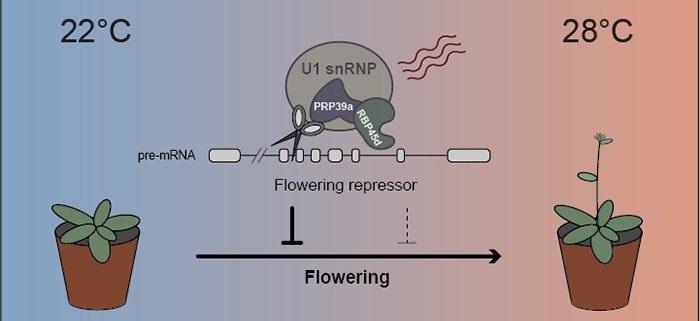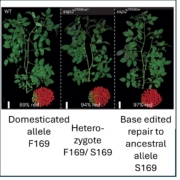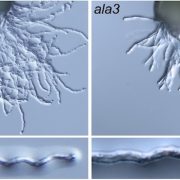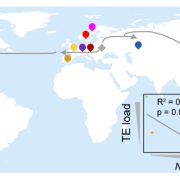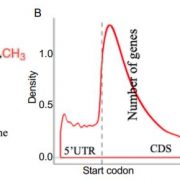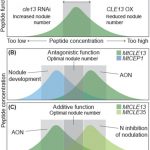An RNA splicing factor regulates temperature-responsive flowering
Background: Eukaryotic genes contain non-coding sequences termed introns that intervene between coding sequences. After being transcribed into pre-mRNA, these sequences must be spliced out properly by a protein-RNA macrocomplex called the spliceosome. At the beginning of spliceosome assembly, U1 snRNP defines the 5’ splice sites, thus acting as a focal point in splicing regulation. Splicing regulation plays critical roles in flowering time control in plants, especially in response to changing ambient temperatures. Rising temperatures rapidly alter the expression of major flowering regulators by regulating the splicing efficiency of their pre-mRNAs. However, the underlying mechanism of temperature-responsive flowering remains poorly understood.
Question: We investigated the functions of an uncharacterized component of U1 snRNP in Arabidopsis, especially its role in temperature-responsive flowering regulation.
Findings: We identified the evolutionarily conserved splicing factor RBP45d in Arabidopsis, which associates with U1 snRNP by interacting with the U1 component PRP39a. The splicing factors RBP45d and PRP39a both positively regulate the pre-mRNA splicing of a similar subset of transcripts and function similarly in flowering time control. Arabidopsis lacking either RBP45d or PRP39a flowered late and had defects in flowering induction under high ambient temperatures. Further analysis revealed that RBP45d directly associates with the transcripts of the key flowering gene FLOWERING LOCUS M (FLM) and regulates their splicing in response to temperature changes. These findings establish RBP45d as a spliceosomal component that functions in the thermal acceleration of flowering by regulating the pre-mRNA splicing of key flowering genes.
Next steps: Changes in ambient temperature have been shown to affect the splicing profile of the Arabidopsis transcriptome. According to our findings, U1 snRNP components are involved in this process. How temperature signals converge into the splicing machinery and the underlying mechanism should be further investigated.
Ping Chang, Hsin-Yu Hsieh, Shih-Long Tu (2022). The U1 snRNP component RBP45d regulates temperature-responsive flowering in Arabidopsis. https://doi.org/10.1093/plcell/koab273


